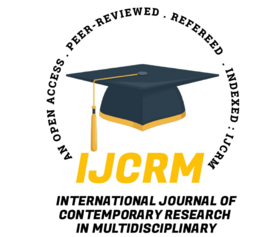International Journal of Contemporary Research In Multidisciplinary, 2025;4(3):369-373
Distribution of Intraocular Pressure by Gender, Age and Co-Morbidities: A Community-Based Cross-Sectional Study in Nepal
Author Name: Dr. Prakash Shah; Dr. Amita Dangol;
Paper Type: research paper
Article Information
Abstract:
Elevated IOP is a major contributing factor to the development of glaucoma. Decreasing IOP is the only recognized method for the treatment of glaucoma or reducing its progression rate. This study aimed to investigate the IOP in Nepali people and its distribution by age, gender, and co-morbidities. This study was conducted on 430 adult Nepali people. Blood pressure was measured by the auscultatory method. A Twelve-hours fasting blood sample was drawn to estimate blood sugar level. IOP was measured by slit lamp mounted Goldman’s applanation tonometer. Male participants had significantly higher IOP than females.
IOP increased with increasing age of the participants and had a significant positive correlation. Overweight or obese, hypertensive, hyperglycemic participants had significantly higher IOP than their normal counterparts. IOP had a significant and positive correlation with BMI, blood pressure and fasting blood glucose. Higher IOP was observed to be associated with co-morbidities like obesity, hypertension, and hyperglycemia in this study.
Keywords:
IOP, gender, age, co-morbidities, obesity, hypertension, hyperglycemia
How to Cite this Article:
Dr. Prakash Shah,Dr. Amita Dangol. Distribution of Intraocular Pressure by Gender, Age and Co-Morbidities: A Community-Based Cross-Sectional Study in Nepal. International Journal of Contemporary Research in Multidisciplinary. 2025: 4(3):369-373
Download PDF





